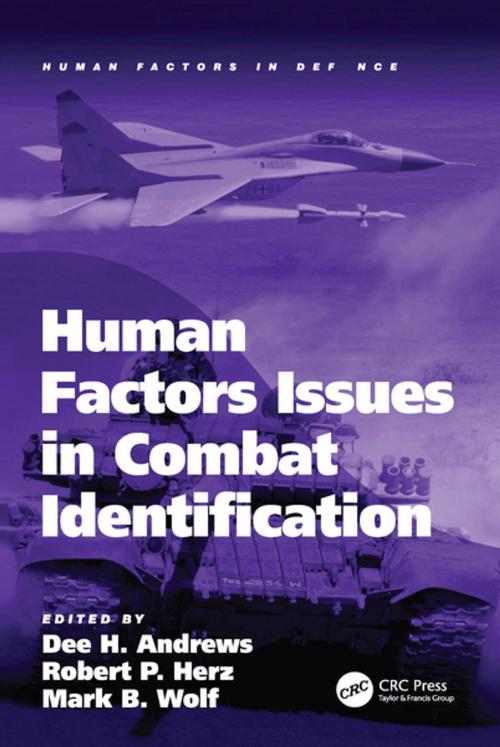Human Factors Issues in Combat Identification
Nonfiction, Science & Nature, Technology, Industrial Health & Safety, Social & Cultural Studies, Political Science, International, International Security| Author: | ISBN: | 9781317120186 | |
| Publisher: | CRC Press | Publication: | September 29, 2017 |
| Imprint: | CRC Press | Language: | English |
| Author: | |
| ISBN: | 9781317120186 |
| Publisher: | CRC Press |
| Publication: | September 29, 2017 |
| Imprint: | CRC Press |
| Language: | English |
This edited book presents an array of approaches on how human factors theory and research addresses the challenges associated with combat identification. Special emphasis is placed on reducing human error that leads to fratricide, which is the unintentional death or injury of friendly personnel by friendly weapons during an enemy engagement. Although fratricide has been a concern since humans first engaged in combat operations, it gained prominence during the Persian Gulf War. To reduce fratricide, advances in technological approaches to enhance combat identification (e.g., Blue Force Tracker) should be coupled with the application of human factors principles to reduce human error. The book brings together a diverse group of authors from academic and military researchers to government contractors and commercial developers to provide a single volume with broad appeal. Human Factors Issues in Combat Identification is intended for the larger human factors community within academia, the military and other organizations that work with the military such as government contractors and commercial developers as well as others interested in combat identification issues including military personnel and policy makers.
This edited book presents an array of approaches on how human factors theory and research addresses the challenges associated with combat identification. Special emphasis is placed on reducing human error that leads to fratricide, which is the unintentional death or injury of friendly personnel by friendly weapons during an enemy engagement. Although fratricide has been a concern since humans first engaged in combat operations, it gained prominence during the Persian Gulf War. To reduce fratricide, advances in technological approaches to enhance combat identification (e.g., Blue Force Tracker) should be coupled with the application of human factors principles to reduce human error. The book brings together a diverse group of authors from academic and military researchers to government contractors and commercial developers to provide a single volume with broad appeal. Human Factors Issues in Combat Identification is intended for the larger human factors community within academia, the military and other organizations that work with the military such as government contractors and commercial developers as well as others interested in combat identification issues including military personnel and policy makers.















